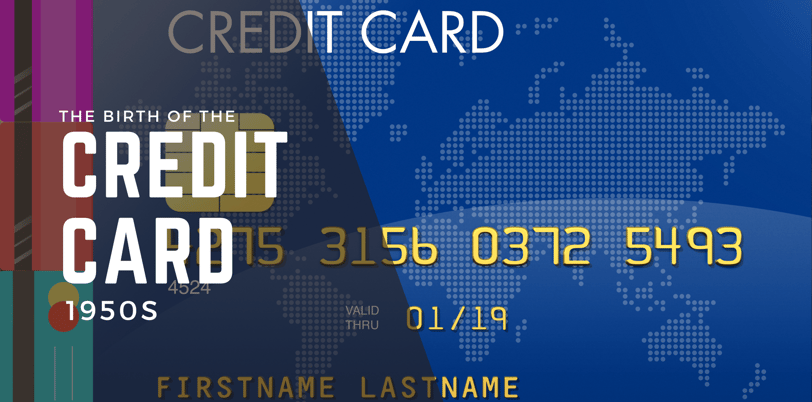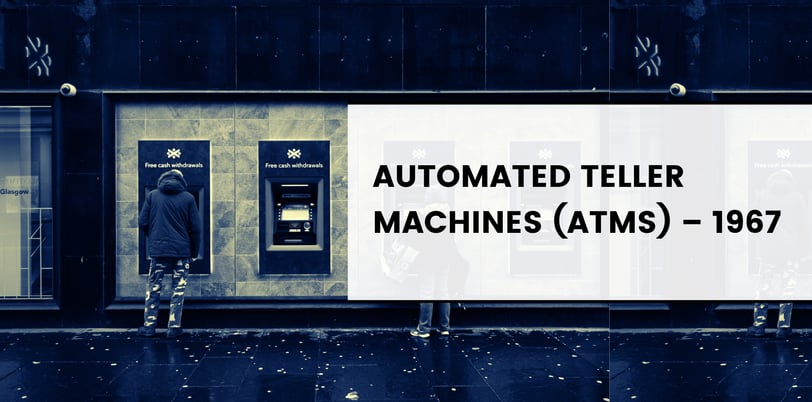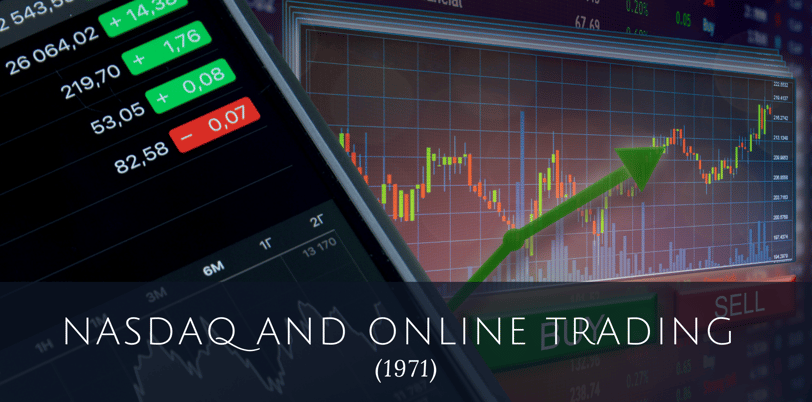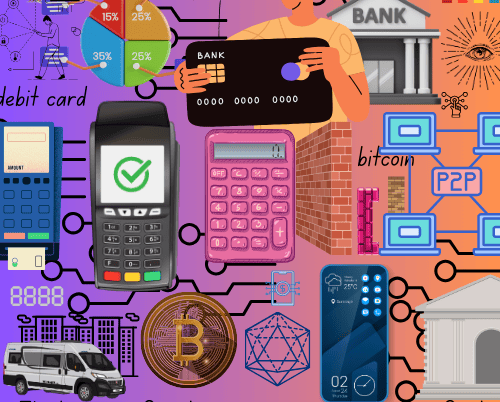From Credit Cards to Blockchain: Key Milestones Shaping FinTech's Evolution
The journey of financial technology, or FinTech, began with innovations that made financial transactions more efficient, secure, and accessible. Here's a detailed look at some defining milestones and the transformative impacts of pioneering companies and technologies.
FIN-TECH
Chibuzo Uzodigwe
5/8/20248 min read
The Birth of the Credit Card (1950s):
The introduction of the first modern credit cards which revolutionized personal finance was created in the 1950s, it marked a shift in how consumers made payments. It was born out of a simple yet relatable problem when Frank McNamara, a businessman, found himself unable to pay for his meal at a New York restaurant because he had forgotten his wallet. This incident inspired him to create a universal payment card that could be used across multiple businesses without cash on hand.
In 1950, McNamara, with associates Alfred Bloomingdale and Ralph Sneider, founded the Diners Club, offering the first universal charge card, initially available at just 14 New York City restaurants. By the end of its first year, the card had gained 20,000 users, signifying a strong demand for such financial innovation.
The Diners Club card was a “charge card” rather than a traditional credit card, meaning users had to pay the full balance monthly. Revenue came from annual membership fees and merchant transaction fees. The early card was printed on paper stock, with plastic cards becoming common in the 1960s. Initially marketed to traveling businessmen, the card was later expanded to a broader audience, symbolizing a member’s financial credibility and status. While similar systems existed in the early 1900s (department store credit accounts or “charge plates”), Diners Club was the first to establish a universal card usable across multiple businesses and industries.
The success of the Diners Club paved the way for other credit cards. In 1958, American Express launched its own card, followed by Bank of America’s BankAmericard (which evolved into today’s Visa), the first to allow users to carry a balance month-to-month. This sparked the development of credit as we know it today, with credit limits, interest rates, and rewards becoming standard features across competing card brands.
Automated Teller Machines (ATMs) – 1967:
The journey of financial technology (FinTech) has evolved significantly from its origins, aiming to make financial transactions easier, safer, and accessible for more people.
Here's a detailed look at some defining milestones and the transformative impacts of pioneering companies and technologies.
This began with early innovations such as credit cards in the 1950s and ATMs in the 1960s, which marked the first steps toward digital finance. By the 1980s, online banking emerged, ushering in a new era of digital convenience, with electronic transactions allowing banks and consumers to interact through computer systems rather than in-person banking. This digital transformation continued through the 1990s with the growth of the internet, bringing even more financial services online.
The Automated Teller Machine (ATM), introduced in 1967, marked a significant leap in banking convenience and technology. The invention is primarily credited to John Shepherd-Barron, a British engineer who devised the concept of a cash-dispensing machine inspired by the simplicity of vending machines. Shepherd-Barron presented his idea to Barclays Bank, and soon after, the first ATM was installed outside the Barclays branch in Enfield, London, on June 27, 1967.
This initial ATM required customers to use special paper tokens, treated with a trace of carbon-14, and a Personal Identification Number (PIN) to securely verify identity and access funds. The first person to use the ATM was actor Reg Varney, chosen by Barclays to demonstrate the machine publicly.
While Shepherd-Barron's ATM pioneered the concept, other innovators contributed critical improvements. James Goodfellow, another British engineer, was awarded a patent for the PIN system in 1970. His innovation of encoding a secure, reusable PIN on bank cards became an industry standard and improved security substantially. This addition addressed early ATMs’ security vulnerabilities, as many had allowed access simply through physical tokens.
ATMs quickly gained popularity across Europe, despite initial technical limitations. In the U.S., the first ATM was installed by Chemical Bank in New York in 1969, spearheaded by engineer Donald Wetzel. American adoption was initially slow due to consumer skepticism about automated banking, but gradually ATMs became common as banks promoted them and improved their security and connectivity.
Today, over 3 million ATMs operate globally, fulfilling a wide range of financial services. They have evolved to connect securely to banking networks, perform online transactions, and enable convenient banking access worldwide, even reaching remote locations like Antarctica. This widespread availability has not only transformed customer expectations but also shifted banking from branch-centered operations to a more virtual, brand-focused experience.




NASDAQ and Online Trading (1971)


The NASDAQ (National Association of Securities Dealers Automated Quotations) marked a turning point in global finance when it launched in 1971. Created by the National Association of Securities Dealers (NASD), NASDAQ was designed as the first electronic stock exchange to automate trading and provide better transparency than traditional over-the-counter (OTC) markets. The innovation revolutionized how stocks were traded by offering a fully electronic, computerized trading system, making trading more efficient and accessible and laying the groundwork for today’s high-tech stock exchanges.
NASDAQ quickly gained traction by allowing smaller and emerging technology companies to list more affordably than on traditional exchanges like the New York Stock Exchange. This approach fostered NASDAQ’s reputation as the go-to exchange for high-growth technology firms, a trend that began in the 1980s and continues today. Tech giants like Microsoft, Apple, and Intel chose NASDAQ for its tech-friendly model, establishing it as a leader in technology-focused trading. By the 1990s, the exchange expanded into online trading, allowing individual investors to buy and sell stocks directly from their computers, further democratizing investment opportunities.
Today, NASDAQ remains a prominent global exchange, particularly influential in technology and innovation. It’s known for its fast, high-volume electronic trading and is widely regarded as a bellwether of the tech sector due to its listing of industry giants.
Rise of Online Banking (1980s–1990s)
The rise of online banking during the 1980s and 1990s fundamentally changed the banking landscape, allowing customers to conduct transactions remotely and significantly improving convenience. The development of online banking began with various forms of electronic banking, particularly "distance banking" through telephones. Early efforts were led by the United American Bank, which launched one of the first consumer-accessible home banking systems in 1980 through a partnership with Radio Shack. This system used the TRS-80 personal computer to enable secure bank access, supporting services like balance checks and bill payments, though it required an expensive monthly subscription and remained niche.
By the mid-1980s, banks began exploring more advanced online platforms. Large banks, including Citibank, Chase Manhattan, and Chemical Bank, experimented with online banking systems through videotex technology, though limited consumer demand kept these services from achieving widespread adoption. However, the idea of conducting transactions online gained more traction in the 1990s with the rise of the internet. As the internet became more common, banks like Bank of America and Wells Fargo began heavily investing in online banking platforms, which gradually became mainstream.
By 2001, Bank of America had over 3 million online banking customers, reflecting a significant shift toward digital transactions. This trend continued as internet banking became more accessible and secure, offering consumers 24/7 access to accounts, bill payments, and transfers. Today, online banking is a primary banking method for millions worldwide, underscoring the shift towards digital and mobile banking as customer expectations evolve.
The 2008 Financial Crisis and FinTech Boom:
The 2008 financial crisis, one of the most significant economic downturns since the Great Depression, was largely triggered by the collapse of subprime mortgage markets and extensive losses by major financial institutions. These institutions, such as Lehman Brothers, were heavily invested in mortgage-backed securities, whose values sharply declined as many borrowers defaulted on their home loans. As the crisis unfolded, government interventions—like the Federal Reserve’s $85 billion rescue of AIG and the Troubled Asset Relief Program (TARP)—were launched to prevent a complete economic collapse. These programs were designed to stabilize banks, restore liquidity, and instill confidence in the financial system.
In the aftermath of this crisis, consumer trust in traditional banks diminished, creating an opening for financial technology, or FinTech, to grow rapidly. Many people became more open to alternatives to traditional banking, seeking services that were more transparent and customer-focused. Startups offering peer-to-peer lending, mobile payment solutions, and later, blockchain-based systems like Bitcoin, began to fill this gap. This FinTech boom was driven by the desire to improve financial security, reduce transaction costs, and provide consumers with more control over their finances, responding directly to the regulatory gaps and lack of transparency that the crisis had revealed.
Furthermore, the crisis prompted new financial regulations, most notably the Dodd-Frank Act, which aimed to prevent similar failures by increasing transparency and reducing the risks that banks could take on. This regulation accelerated FinTech innovation by encouraging the creation of risk management and consumer protection technologies, reshaping how consumers interact with financial services and how these services are offered.
The 2008 financial crisis, thus, catalyzed the modern FinTech industry by pushing financial service providers to innovate, improve security, and emphasize customer needs and transparency, laying the foundation for today’s diverse FinTech landscape.
Cryptocurrency and Blockchain (2009):
The 2008 financial crisis, one of the most significant economic downturns since the Great Depression, was largely triggered by the collapse of subprime mortgage markets and extensive losses by major financial institutions. These institutions, such as Lehman Brothers, were heavily invested in mortgage-backed securities, whose values sharply declined as many borrowers defaulted on their home loans. As the crisis unfolded, government interventions—like the Federal Reserve’s $85 billion rescue of AIG and the Troubled Asset Relief Program (TARP)—were launched to prevent a complete economic collapse. These programs were designed to stabilize banks, restore liquidity, and instill confidence in the financial system.
In the aftermath of this crisis, consumer trust in traditional banks diminished, creating an opening for financial technology, or FinTech, to grow rapidly. Many people became more open to alternatives to traditional banking, seeking services that were more transparent and customer-focused. Startups offering peer-to-peer lending, mobile payment solutions, and later, blockchain-based systems like Bitcoin, began to fill this gap. This FinTech boom was driven by the desire to improve financial security, reduce transaction costs, and provide consumers with more control over their finances, responding directly to the regulatory gaps and lack of transparency that the crisis had revealed.
Furthermore, the crisis prompted new financial regulations, most notably the Dodd-Frank Act, which aimed to prevent similar failures by increasing transparency and reducing the risks that banks could take on. This regulation accelerated FinTech innovation by encouraging the creation of risk management and consumer protection technologies, reshaping how consumers interact with financial services and how these services are offered.
The 2008 financial crisis, thus, catalyzed the modern FinTech industry by pushing financial service providers to innovate, improve security, and emphasize customer needs and transparency, laying the foundation for today’s diverse FinTech landscape.


Mobile Payments (2010s):
Apple Pay (2014) and Google Wallet (2011) made it easy for consumers to make payments via mobile devices. By linking credit cards to smartphones, mobile wallets expanded cashless payment options and became crucial during the COVID-19 pandemic, as contactless transactions gained popularity globally.
Artificial Intelligence in FinTech:
AI has become a transformative force within the sector. For instance, companies like Revolut and N26 are using AI to offer personalized financial services. AI-powered tools, from automated customer support to fraud detection, optimize operations and enhance customer experience by predicting consumer behavior and personalizing offerings.
Open Banking and APIs:
Open banking initiatives, supported by APIs (application programming interfaces), have allowed consumers to share their financial data securely with third-party providers. This transparency paved the way for personalized financial services and increased competition among banks and FinTech firms alike.
Embedded Finance:
Platforms like Shopify and Housecall Pro have integrated payment solutions, streamlining financial transactions within their broader ecosystems. Embedded finance provides businesses with a fully integrated platform, empowering customers to manage various business functions like booking, inventory, and payments on one interface.
The future of FinTech is likely to be shaped by continued advances in artificial intelligence, blockchain, and mobile solutions. As customer-centricity and accessibility remain core drivers, new technologies are expected to make financial services even more personalized and embedded in our daily lives.
This history showcases the transformative power of FinTech across multiple generations, illustrating how innovations have reshaped financial systems and consumer expectations.
If you're a FinTech enthusiast or have experiences with any of these technologies, we invite you to share your thoughts and leave a review!
About
Copyright © 2024 Clientverdict Inc. All rights reserved. Clientverdict, Clientverdict logo and related marks are registered trademarks of Clientverdict.

Discover
Clientverdict for Business
About Clientverdict
Careers
Press
Clientverdict Project Cost Guides
Trust & Safety
Content Guidelines
Investor relations
Your Privacy Choices
Privacy Policy
Terms of service
Accessibility Statement
Ad Choices
Collections
Talk
Events
Clientverdict Blog
Support
Clientverdict Mobile
Developers
RSS
Contact:
Languages:
Clientverdict for Business
Business Owner Login
Claim your Business Page
Why We Trust ApriaDirect
Clientverdict for Restaurant Owners
Table Management
Business Success Stories
Business Support
Clientverdict Blog for Business
Collections
Clientverdict Data for B2C
English
818 - 861- 9004
